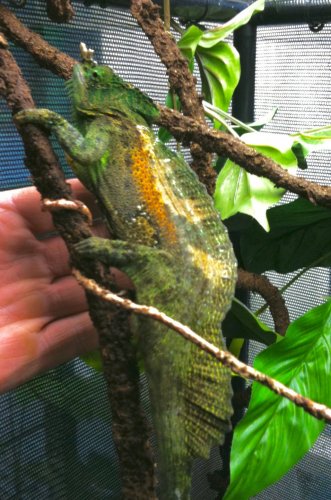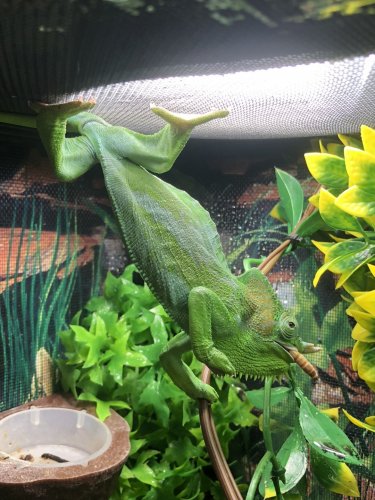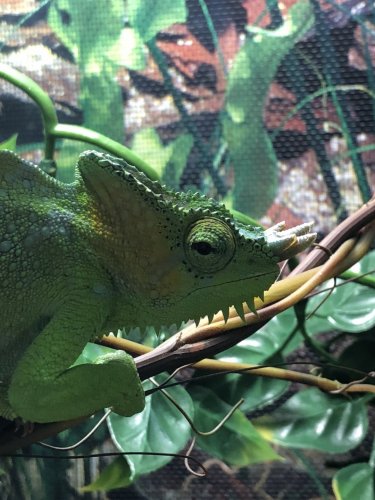jajeanpierre
Chameleon Enthusiast
Janet,
I've never heard of quad quad with red toenails, however there are definitely q. Gracilior without red toenails.
Q.gracilior tend to have longer slightly thinner horns and the sail on the tail is somewhat diminished compared to q. Quad. If you're getting young or sub adult animals none of this info will be of any use.
I'm a big help aren't I? It's difficult having to rely on the collector and importer for such vital information, but with smaller and/or females you really have no choice.
Thanks.
So you are saying that if I have an imported animal with red nails, it is a gracilior unless it is a hybrid that happened in the wild?
Does anyone know how the red nails are expressed--dominant/recessive?--if a red-nailed gracilior were bred to a clear-nailed quad quad? I ask because I am interested in working with graciliors and want to know the best way to assure I only have graciliors. Some graciliors are obvious, but I did see a couple of males from the February import that were being shown to me as quad quads. They had very big, high tail fins but didn't have the fat pouchy look some of the quad quads have. They did have that stripey scalation on their cheeks and down to their shoulders that graciliors seem to have--not that I know much about identifying them! Their horns and chin spikes seemed coarser than some graciliors. The nails were slightly red, similar to how red my male's were at the time (they were roughly the same size as my male) and I don't think there is any doubt my male is a gracilior. My male's nails are now quite red. The importer was a little surprised when I pointed out the gracilior characteristics and agreed they were graciliors.






